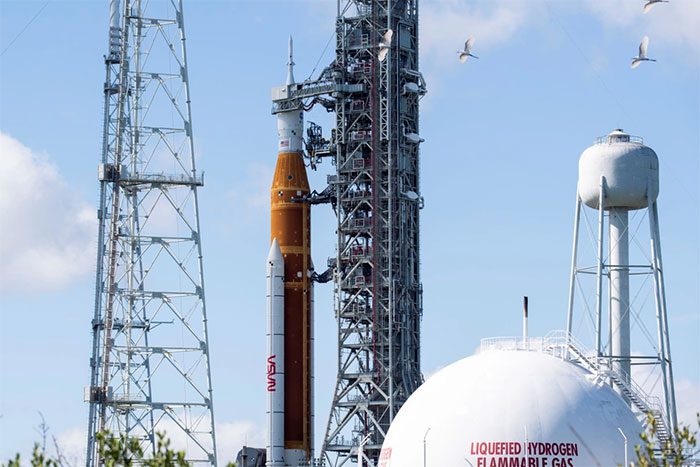The flight of the Orion spacecraft is set to take place next week, marking the beginning of NASA’s program to send humans to the Moon and, eventually, to Mars.
NASA will kick off the Artemis 1 mission by launching the Orion spacecraft to the Moon on November 17, as reported by the Guardian. From Cape Canaveral, Florida, the Orion spacecraft is expected to travel a distance of 2 million kilometers over 25 days to reach the Moon before returning to Earth.

The Orion spacecraft will be launched to the Moon next week. (Photo: NASA)
The mission of Artemis 1 serves as a test flight, laying the groundwork for future launches in the Artemis program.
“Humans will return to the Moon after 50 years. We will stay there, learn how to work, manufacture, and develop new technologies, systems, and spacecraft with the goal of going to Mars,” explained Bill Nelson, NASA Administrator, regarding the objectives of the Artemis program.
The “crew” aboard the Orion spacecraft for this mission consists of mannequins equipped with sensors to measure radiation levels and gravity on the Moon.
If the Artemis 1 mission is successful, NASA will proceed with the Artemis 2 mission. The Artemis 2 mission is scheduled for May 2024 and will send astronauts into space to test the equipment and life-support systems to be used in future explorations.
It is anticipated that the Artemis 3 mission will be launched in 2026, marking the first time humans will return to the Moon since 1972.
The Artemis program is expected to cost NASA approximately $93 billion. The goal of this program is to establish a long-term presence in space, including building a base on the Moon. From this base, NASA plans to send humans to Mars by the mid-2030s.


















































